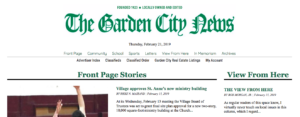 The New York Times reported last month on several incidents in which public officials revoked public notice contracts “in an effort to punish their hometown newspapers for aggressive coverage of local politics.” The story included two recent cases in New York state.
The New York Times reported last month on several incidents in which public officials revoked public notice contracts “in an effort to punish their hometown newspapers for aggressive coverage of local politics.” The story included two recent cases in New York state.
New York isn’t the only place where public officials sometimes seek to retaliate against those they perceive as enemies. But the state’s folkways and traditions, along with its arcane and antiquated public notice statutes, often result in the chaotic administration of the law.









